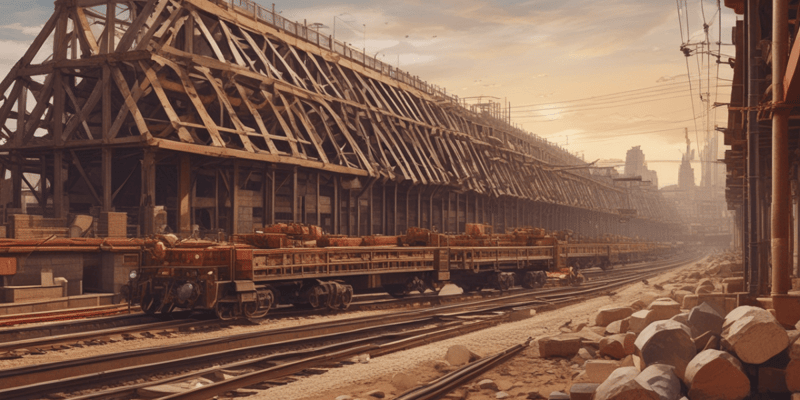Questions and Answers
Masonry is one of the newest construction materials.
False
Glass blocks are a type of hollow masonry unit.
False
Stone masonry units are always hollow.
False
Concrete masonry units with a net cross-sectional area > 90% of the gross area are considered hollow.
Signup and view all the answers
Clay bricks are a type of hollow masonry unit.
Signup and view all the answers
What are some examples of ancient structures that demonstrate the durability of masonry as a construction material?
Signup and view all the answers
What is the main difference between solid and hollow concrete masonry units (CMUs)?
Signup and view all the answers
What are the different types of masonry units mentioned in the lecture?
Signup and view all the answers
What is the characteristic of a concrete masonry unit (CMU) that is classified as solid?
Signup and view all the answers
What is the term used to describe concrete masonry units that have a net cross-sectional area less than 75% of the gross area?
Signup and view all the answers
Masonry is one of the oldest & most ______ construction materials
Signup and view all the answers
Examples of ancient structures that demonstrate the ______ of masonry as a construction material include the Pyramids of Egypt
Signup and view all the answers
The net cross-sectional area of a solid concrete masonry unit is greater than ______ of the gross area
Signup and view all the answers
The lecture mentions ______ blocks as a type of masonry unit
Signup and view all the answers
Structural ______ tiles are a type of hollow masonry unit
Signup and view all the answers
Masonry is one of the oldest & most durable construction ______ materials
Signup and view all the answers
The types of masonry units include Clay ______ and Stone
Signup and view all the answers
The examples of ancient structures include the Pyramids of ______ and the Great Wall of China
Signup and view all the answers
What is the significance of the net cross-sectional area of a concrete masonry unit in determining its classification as solid or hollow?
Signup and view all the answers
How do the historical examples of masonry structures mentioned in the lecture demonstrate the durability of masonry as a construction material?
Signup and view all the answers
What are the key differences between the various types of masonry units mentioned in the lecture, and how do their properties influence their applications in construction?
Signup and view all the answers
How do the weight classes of masonry units impact their performance in construction, and what are the implications for building design and safety?
Signup and view all the answers
What are the exposure properties of masonry units, and how do they influence the selection of units for specific construction projects?
Signup and view all the answers
Concrete masonry units with a net cross-sectional area less than 75% of the gross area are considered solid.
Signup and view all the answers
All types of masonry units mentioned in the lecture are solid.
Signup and view all the answers
The weight classes of masonry units have no impact on their performance in construction.
Signup and view all the answers
Masonry units are only used for load-bearing applications.
Signup and view all the answers
The net cross-sectional area of a hollow concrete masonry unit is always greater than 75% of the gross area.
Signup and view all the answers




